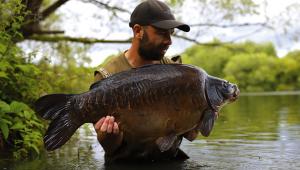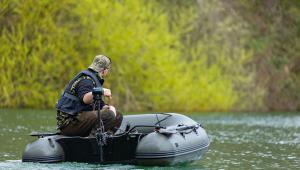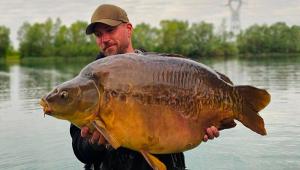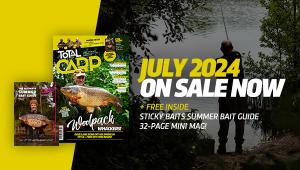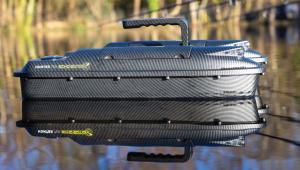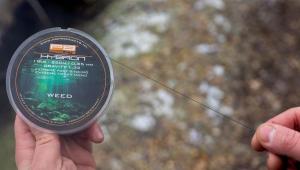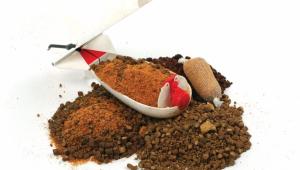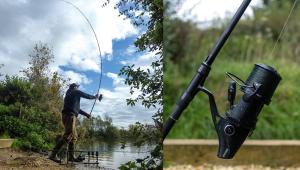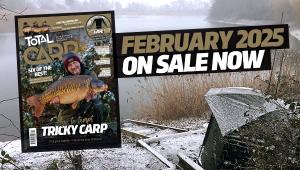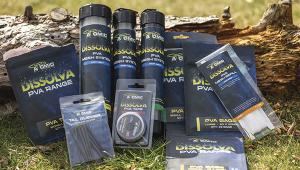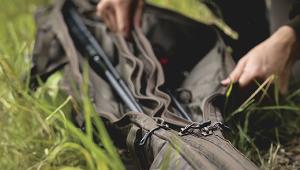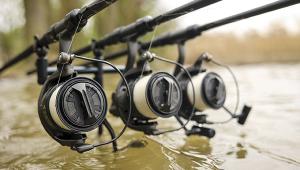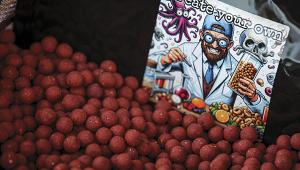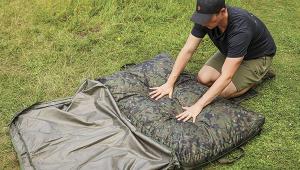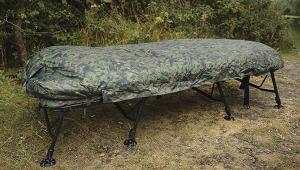ICON | Donald Leney - The Start of Something Beautiful
![]()
Donald Leney – The Start of Something Beautiful In present day Britain our lakes, rivers and canals contain more carp than ever. The diverse range of king carp now available to us across a variety of venues is thanks to those who have taken it upon themselves to breed and stock quality fish. We know now given the right environment, carp can live for several decades, grow to incredible sizes (the current British record stands at 68lb 1oz) and recognisable fish are often given names.
Carp fishing now is a complete contrast to that of 100 years ago when carp were much thinner on the ground as the demand for pleasure fishing hadn’t reached the peaks of the modern day and as a result there were fewer anglers present. Anglers in the early 1900s commonly believed that carp were extremely difficult to catch and the art of learning how to do so took too long! So, who was responsible for the carp angling boom?
Several people have certainly contributed but the most notable is Donald Leney. He helped to shape British carp fishing as we know it by stocking many of the lakes we refer to as historic and iconic today.
From 1923 Donald Leney had been working for Surrey Trout Farms and, unbeknown to many, trout were his primary business interest. He had stocked numerous venues around the world with trout, although over time he had developed quite a noticeable soft spot for carp even though he himself was not strictly a carp angler.
Donald Leney was not a breeder of carp and in fact stocked carp that he imported. The fish he introduced across Britain and Europe, primarily between the late 1920s and mid 1950s, are commonly referred to as ‘Leneys’. In fact, the breeder of his carp was Alfred Gasch, who in around 1900 blessed the world with his Galician carp strain, so called because the fish had originated from the Galicia region in Poland. Alfred had produced a well-proportioned, often scaly strain of carp that soon proved to be a steady growing carp. These Galician carp were very popular in Europe before, during and after the two world wars.
Few stockings of carp took place in Britain before the Second World War, although Donald Leney was one of the very few who thankfully took it upon himself to do so. Donald sourced his carp from a fish farm outside the village of Vassen in Holland; these were of the Galician strain and he would hire a railway carriage to transport the fingerlings he had handpicked.
Lakes back then were often stocked for ornamental purposes or weed control rather than for angling requirements and in 1934 Redmire Pool (previously known as Bernithan Court Water) required the introduction of carp for weed control. Only trout were known to inhibit the venue prior to this. As a result, 50 carp, which had been spawned in 1932 and consisted of mostly mirrors, were stocked into the three-acre estate lake on March 10th, 1934, ranging from five-and-a-half to eight inches in size. The water at the time was incredibly rich and there was little in the way of predation that could have posed a threat to the newly stocked carp. These 50 fish were to have the biggest impact on carp angling the world has ever seen, all thanks to Donald Leney.
The year of 1951 saw the first of three British record carp caught from the venue, when local angler Bob Richards landed a 31lb 4oz mirror on October 3rd. Only the year before, the first reported carp of 6lb from Redmire was caught by John Munro. Incredibly, less than 12 months later on a Saturday morning dating back to September 13th, 1952, Richard Walker caught a 44lb common carp.
The capture of this fish continues to remain a source of inspiration for many an angler and was later known by the masses as Clarissa (previously known as Ravioli). The carp then spent the rest of its life in the London Zoo Aquarium at Regent’s Park.
Of course, there was now plenty of interest for the fish Donald Leney had stocked into Redmire Pool almost 20 years previous. Over the years, the likes of Denys Watkins-Pitchford (who wrote under the pseudonym BB), Bill Quinlan, Jack Hilton, Eddie Price and Rod Hutchinson ventured to Redmire Pool and experienced the magic of fishing the iconic venue. The last British record broken at Redmire was when Chris Yates caught the 51lb 8oz linear, christened the Bishop, on June 16th, 1980.
Following on from this capture Chris soon found friendship with Donald Leney, and as they lived local to each other Chris would often visit Donald for “high-tea”. When Donald passed away in October 1987, Chris was left his invoice books, which contained much if not all of his carp stocking records. To this day these books still hold many secrets hidden away from the carp fishing world, but there are some venues that are extremely well established and known to have been stocked with Leneys.
Some of the most notable that received stockings were Billing Aquadrome, with 43 two-year-old fingerlings in 1935 to one lake on site and also further stockings in 1936 and 1937 to the remaining lakes; Frensham Ponds were stocked with 100 small carp from the Surrey Trout Farm in 1952, and the iconic venue to so many carp anglers set in the Colne Valley, known as Savay, has been stocked with thousands of carp with various strains over the years.
The first stocking of 208 3in to 4in Leneys took place in November 1950, with several more thereafter. Savay has since gone on to produce carp of enormous sizes of over 50lb as well as countless 30 and 40lb specimens over the years.
Stu Harris is an angler who has fished many waters known to hold true Leneys, from which he has caught enviable carp, but the pick of the bunch is the beautifully proportioned and scaly example known as Sally. Stocked into the venue in January 1956 as a yearling, this fish is still thought to be alive today, making it well over 60 years old.
“Sally is an incredible creature,” Stu told us. “I got lucky enough to trick her in February 2012. It was a cold day, starting with a thick frost. I remember well that the trees were a sparkly shade of white for most of the journey there. The trees at Savay are immensely high, meaning that it’s usually well into the day when the first glimpses of sunshine are cast upon the pool. I wandered the pool for a while without seeing very much at all but feeling hopeful just the same.
“In the summer months the dog walkers are out early, but in February they stay in bed that little bit longer. I noticed that the sun would warm the margins of the northwest corner of the pool near the steps, so set up my stall there in preparation.
“Dark shapes appeared from under the bush to my right. With my chunk of freelined luncheon meat in place I watched as the fish drew closer. The water wasn’t coloured, but it was far from clear enough to see what fish they were. The group dropped in the vicinity of where the hook bait and free scatterings were and disappeared momentarily.
“As I sat there hiding behind the ferns I could hear my heart beating, and then it happened, the line began to straighten and as it tightened I lifted the rod and felt that first charge. Right then it could have been one of the small commons and I would have been happy. As it turned out it was probably one of the most special carp I’ll ever get to hold, a true legend and one that will live with me forever.”
What is considered by many to be the best strain of carp there has ever been, are now being bred in Britain with the likes of Lower Berryfield Fisheries producing 100,000 fish per year on site. These second-generation Leneys replicate their forefathers perfectly. Many fisheries have realised this and are now choosing to stock them over the choice of several different strains available today. One such person who has decided to do so is successful and long-time angler Rob Allen, who like many people has had the dream of owning his own lake since he was 10 years old and wants to create a venue the northwest has never seen before. His choice was to handpick all of his carp from Lower Berryfield Fisheries as these carp help to represent the legendary carp that have passed over the years.
Credits
It is hopefully clear to many after reading this piece that Donald Leney was an individual who has been incredibly vital to the growth and popularity of carp fishing. Therefore, the responsibility of writing about such an important person required thorough research to provide an accurate record of events to justify the major historic events that have taken place in the last 80 years. Credit to Len Arbery and Chris Ball, both of whom who are fantastic and passionate carp historians who have written much relating to the early days of carp fishing. Thanks must also go members of the Traditional Fisherman Forum, Steve Briggs, Stu Harris, Chris Yates, Richard Walker and Bob Richards, as without them the creation of this piece would not have been possible.
- Log in or register to post comments
